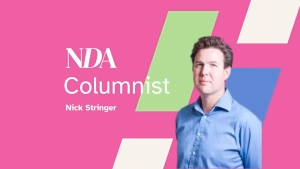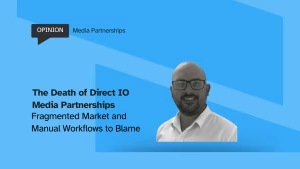By NDA monthly columnist Dan Plant, Executive Head of Strategy, Starcom UK
Advertisers have always wanted to be close to the news. Since the early 1600s businesses have identified the potential to publicise their goods and services in mass printed newspapers, sharing space with stories that people cared about and making their own messages more newsworthy.
That connection between news and advertising has never gone away. When I started my career, the first ad I bought was in The Times for Virgin Trains. They had a BIG sale on so it had to be booked as MN – that is “Main News” – Virgin wanted their price reduction to be big news, so they didn’t want to be buried amongst celeb gossip, they wanted to be surrounded by equally important news stories.
Every big brand advertiser wanted the same thing; to be in the part of the newspaper that mattered the most and that was read by the most people. The bigger the news story, the better, and this advertising principle is still true today in printed news.
Given this, it is baffling to hear that those same news publishers are now struggling to monetise those news sections online. The proliferation of blocklists has meant vast amounts of high quality, journalist-led “Main News” inventory is being picked up at rock bottom rates or not being sold at all. The programmatic models are leaving it on the shelf due to being “controversial content”.
Now anyone with a brain in publishing recognises the need to be sensitive with regards to the placement of advertising around certain topics. Back when I was booking those Virgin Trains ads in 2000, the Hatfield train crash happened, killing a number of people. I had ads booked in the paper the following day, and we needed to pull them all. However, we didn’t even need to pick up the phone. Each of the newspapers recognised the potential problem and pulled the advertising unilaterally. We had a strong relationship of trust with those publishers – we shared customers and neither of us had an interest in causing upset or offence.
That’s why these extensive blocklists can be worrying. We seem to have replaced human intuition and a trust of quality publishers with an algorithm that is intelligent but without the human understanding.
As we know, publishers – like the Guardian’s Nick Hewat – have widely highlighted some of the unintended consequences of these blocklists and, in April, we saw the launch of the #BackdontBlock campaign led by the UK’s news brands. The IAB even launched a very comprehensive guide to keyword blocking, but we still need to look at why this might be happening and why we should be discouraging brands from the excesses of these behaviours.
1) The growth of adtech has allowed us to measure so much that we might believe we can quantify the value of everything and start to think that an impact against one of our audience is worth the same wherever it appears.
2) we have become very risk averse and believe that consumers will attribute negative sentiment of a news story to how they feel about a brand.
The reality is that neither of these beliefs is true.
Again, the premium for advertising in the main news section has always been significantly greater than the reach advantage, but we all paid that premium because it always paid back. Recent Newsworks neuroscience studies show greater dwell time and potential for memory encoding around hard news vs soft “news” stories.
At the same time, we have no evidence that anyone actually associates a negative sentiment of the story with the advertisers around it. At Starcom we recently commissioned a qualitative study with our online community “The Street” and overwhelmingly it came back that readers would not judge a brand negatively if they had their advertising in proximity to a “controversial” news story.
So brands needn’t be scared of being near that content – it is high engagement, high dwell time, more likely to be remembered and no-one blames the advertiser for some bad news in the world.
However, if the only problem here were that some advertisers were unnecessarily avoiding quality content, I might not even bother to write this column. Nevertheless, I still feel we should be paying attention to the words that are on these blocklists.
Many advertisers won’t advertise around the word “gay” or “lesbian”, and some publishers are monetising BLM content at a fraction of the price of the rest of their news. Websites such as Gay Times and DIVA struggle to monetise their content at all even though they have hugely valuable audiences. This is a problem.
By removing advertising, we are de-funding topics that need to be heard, we are silencing those diverse groups through financial censorship. We talk a lot about diversity of hiring in our industry, but we should really take a look at the impact of our actions in where we spend our advertising money too.
I mentioned the relationship of trust between advertiser and publisher – we have the same customers, we have the same interests, but I also believe that as advertisers we have a duty to support those publishers. Whilst they are delivering high quality journalism to audiences who want to read it and who also buy our products, then we have a duty to ensure they are able to financially support those endeavours.
And if we don’t, we are the ones who will lose out. Either those titles will no longer be in business, or they will be behind a pay wall with much smaller audiences and our brands will be left fighting over diminished audiences in cheap low engagement content.
So take a look at those blocklists. Look at every single word and see if you can really justify it being there. Many words are just left over from legacy news stories, so maybe just start from scratch, and let’s make sure our advertising money is working as hard as possible for the media it is in, the audiences who read it, as well as for the brands











